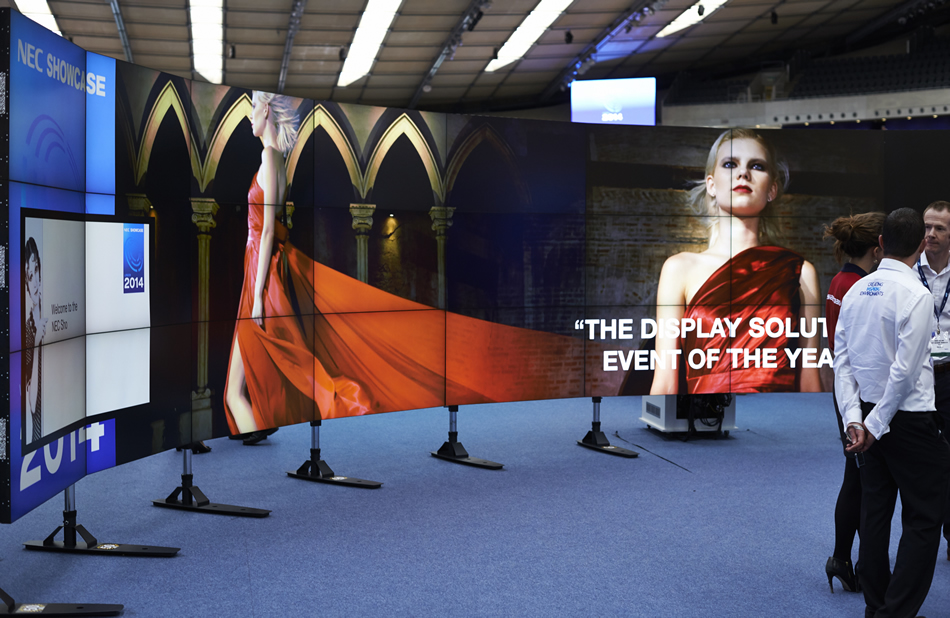Nessan Cleary takes a look at how digital signage, otherwise known as narrow casting, could become a useful tool in your arsenal.
When it comes to simply displaying information in a cost-effective manner, it’s hard to beat a printed sign. Yet digital signs are popping up ever more frequently, and you can understand why. Last year, for example, British Airways used a digital screen in London’s Piccadilly for its ‘Look Up’ campaign, with a little boy pointing up at real planes as they flew high above the screen. Software was able to track actual flight data so that the boy was always pointing directly at a plane, which was identified on the screen. Clever stuff. So where does that leave those of you printing ‘traditional’ signs when the arguments for using digital screens seem so compelling?
Digital screens can display video, including animations and live video, such as a feed streamed from an event, or a camera nearby, which can make for a compelling display. Using video as part of a retail display means that as well as picturing a product, it can also be demonstrated.
Plus, the images can be updated quickly, so advertising can change to reflect real-time events, such as the result at a sporting fixture. This also means that a large number of displays can be changed at the click of a mouse without having to send fitters out to physically change over a printed graphic. This saving alone can help to justify the cost of installing the screens.
Another advantage is that the screens can be shared by several advertisers (a number of adverts could be rotated, changing every 30 seconds for example, rather than having a single static display), helping to spread the cost.
But, there are disadvantages to using screen-based media, the most obvious being the high cost of buying and installing the screens, plus the cost - and hassle - of maintaining them, as any failure will immediately result in a blank screen.
Then of course there is the power consumption to actually run the screen and the difficulty of protecting them against vandalism.
Many people also forget that the content can be more expensive to create, particularly if it involves shooting and editing video footage. Some service providers get around this by licensing rolling news services so, for example, the screens on the Heathrow Express, which contain ticketing and safety information, also include BBC News 24 reports.
There are several different types of screens, mainly LCD and LED, as well as projectors. LEDs are starting to become more popular as they are less prone to failure and use less power. There are even some 3D screens from Sharp and Toshiba that use autostereoscopy to display 3D images without needing special glasses, but these are expensive and fairly rare. Some digital signs also incorporate touch screens. So, for example, signs at a zoo could incorporate questions and answers aimed at children. Or a sign at a shopping centre showing the layout could let shoppers find a particular shop.
Digital signage will also need some form of content management, which usually requires a constant data feed to monitor the display. That said, the images could come from a DVD drive or a sequence of JPEGs on a USB thumb drive.
Actually, none of this is beyond the capabilities of the wide-format service provider already routinely adding QR codes linked to personalised URLs for a level of interactivity. Moreover, it perhaps makes sense to integrate digital signs into more conventional displays. Screens are expensive – so a smaller one set into a larger printed display could be a cost-effective way to take advantage of this technology.
Nobody’s saying integrating screen technology into a wide-format print business is easy, or for all, but given their proliferation and capability, together with a move towards more integrated campaigns linked to websites and other media, isn’t it worth investigating the possibilities?


